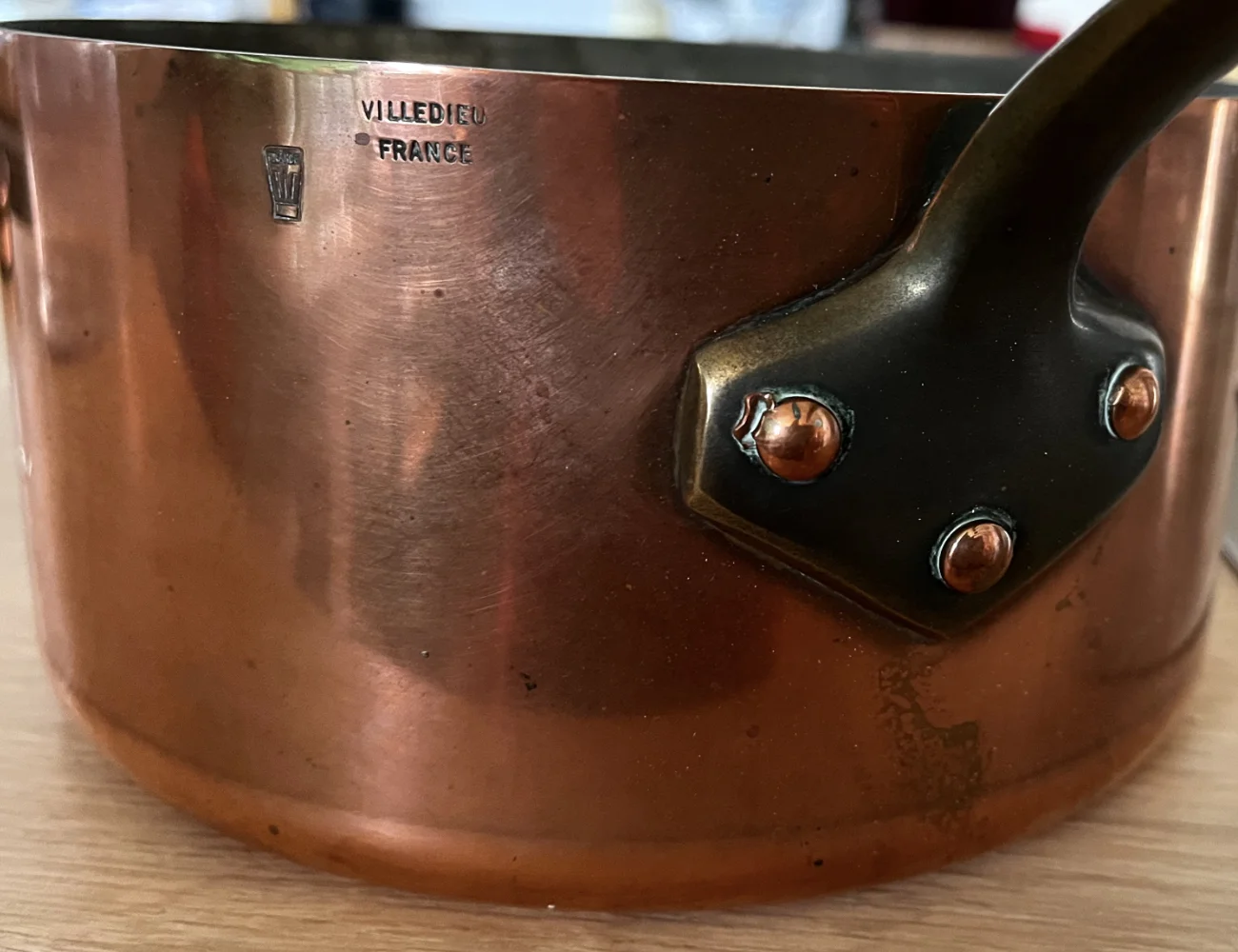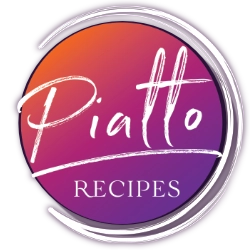Let’s delve into the fascinating world of copper cookware, dissecting its safety, its benefits, and the occasional drawbacks. This investigation aims to shed light on the pivotal question: “Is Copper Cookware Safe?” So, let’s get started!

Why Copper Cookware? The Pros
Copper cookware takes the crown for its superior heat conductivity, a quality that both professional chefs and cooking enthusiasts highly commend. Its ability to rapidly heat up and cool down provides a precise temperature control unparalleled by other materials.
Moreover, it’s worth mentioning copper’s inherent anti-microbial properties. In fact, the very nature of copper and its alloys presents a lethal environment for harmful microbes, such as E Coli and Salmonella, that commonly lurk in kitchens, thereby decreasing the risk of foodborne illnesses.
Let’s unpack these perks further:
- Unmatched Temperature Precision: The stellar heat conduction of copper cookware allows it to quickly adapt to changes in heat, aiding in efficiently heating or cooling ingredients.
- Inherent Anti-Microbial Qualities: Copper’s unique biostatic features inhibit the growth and survival of bacteria and other microorganisms on its surface.
Exploring the Advantages in Detail
Copper’s Thermal Mastery
Copper’s exceptional heat conduction is hardly a surprise. It is, after all, the material of choice for almost all electrical wiring. Its quick thermal response makes it ideal for cooking tasks that demand precise temperature control such as the preparation of sauces, candies, and custards. In comparison, other popular cookware materials like cast iron, glass, and stainless steel, heat up much more slowly and retain heat long after they are removed from the heat source, which may be beneficial for some cooking applications but less ideal for recipes that necessitate precise control over temperature changes.
Copper’s Anti-Microbial Prowess
Since ancient times, people noticed that water stored in copper vessels spoiled less quickly than that stored in other materials. Modern science later substantiated these observations, confirming the biostatic properties of copper and its alloys. Specifically, copper surfaces have been shown to kill 99.9% of bacteria within two hours of exposure1.
The EPA (Environmental Protection Agency) has sanctioned the use of copper alloys for their anti-bacterial claims due to substantial scientific evidence2. In stark contrast, popular cookware materials such as stainless steel lack these inherent anti-microbial properties. Hence, copper cookware serves as an excellent choice for minimizing germ spread in a kitchen.
The Flipside: Cons of Copper Cookware
However, copper cookware does have a few caveats:
- Incompatibility with Acidic Ingredients: Copper cookware should not come into direct contact with food and liquids having a pH below 6.
- Dishwasher Incompatibility: Copper cookware usually requires hand washing.
The Copper Conundrum: Essential but Potentially Toxic in Excess
Copper, as a trace mineral, plays a crucial role in our health. However, an excess of copper can be toxic. According to the European Food Safety Authority (EFSA), the maximum safe copper intake for adults is 5 mg per day3, while the US FDA sets this limit at 10 mg per day4.
The issue arises when copper cookware comes in contact with acidic ingredients (pH less than 6). This interaction may cause the food to absorb copper, potentially leading to copper intake beyond the recommended daily limit.
Acidic Ingredients and Copper: A Risky Affair
One particular study sheds light on the extent of copper absorption when acidic ingredients are prepared using copper cookware5. It discovered that when a 3% (w:w) aqueous solution of citric acid, malic acid, or acetic acid came into contact with unlined copper cookware for 180 minutes, the solution absorbed 26.9-74.6 µg (micrograms) of copper per square cm.
The calculated copper content of a food item prepared in a 20 cm x 20 cm square pan would be approximately 30 mg, significantly exceeding both the EFSA and FDA’s recommended daily copper intake if you consumed even a third of that item.
This underlines the need to exercise caution while using unlined copper cookware for preparing acidic foods and liquids. However, adopting a balanced approach of utilizing unlined copper cookware for some tasks and lined copper cookware for others can allow you to enjoy the best of both worlds!
Lined VS Unlined Copper Cookware
To prevent the direct contact of copper with acidic ingredients, copper cookware often comes lined with other materials such as tin or stainless steel.
This setup leverages the heat reactivity of copper (on the outside) while circumventing the toxicity issues that could arise when copper comes in contact with acidic ingredients. Consequently, you can use lined copper cookware for all your culinary adventures without worrying about safety.
FAQ about Copper Cookware
Can I absorb copper through the skin? No, there is no scientific evidence to suggest that copper can be absorbed through the skin6.
Sources:
Footnotes
- “Copper: Environmental Dynamics and Human Health.” Journal of Environmental Science & Technology.
- United States Environmental Protection Agency. “EPA Registers Copper Alloys to Combat Cross Contamination.”
- European Food Safety Authority. “Scientific Opinion on Dietary Reference Values for copper.”
- US Food and Drug Administration. “Daily Value on the New Nutrition and Supplement Facts Labels.”
- “Release of Copper into Foods from Unlined and Tin Lined Copper Cookware.” Journal of Food Protection.
- “Copper Absorption Through the Skin?” NCBI PubMed.
Want to give copper cookware a try? Brands to consider!
Here are several companies with an excellent reputation when it comes to copper cookware (affiliate links):
- Mauviel: A French company founded in 1830, Mauviel is renowned worldwide for its high-end copper cookware. The company is a favorite among professional chefs and cooking enthusiasts alike for their products’ quality, durability, and performance.
- de Buyer: Another French company, de Buyer has been crafting cookware since 1830. They offer a range of products, including a line of copper cookware that is well-regarded for its performance and aesthetics.
- Matfer Bourgeat: This company, also hailing from France, is widely respected in the culinary industry for its durable and high-performance cookware. Their copper cookware is considered top-notch.
- Ruffoni: An Italian brand known for its artisanal, hand-hammered copper cookware. Ruffoni’s products combine high quality and performance with a unique, beautiful aesthetic.
- Falk Culinair: A Belgian company that specializes in copper cookware. They’re known for combining copper with stainless steel for excellent performance and easier maintenance.
- Lagostina: An Italian company that’s been around since 1901. Their copper cookware, particularly the Martellata line, has been praised for its functionality and beautiful design.
Remember, copper cookware requires more care and maintenance than other types of cookware, but with proper care, these pieces can last a lifetime.
What about Villedeu?
Atledu Les Fondeurs is a renowned French cookware company, located in the village of Villedeu-les-Poêles, which is often referred to as the “City of Copper.” The company is renowned for its artisanal techniques and traditional manufacturing methods.
Atledu Les Fondeurs, along with other manufacturers in the Villedeu region, produce high-quality, durable copper cookware that is well-regarded in the culinary world. These products offer excellent heat conduction and beautiful aesthetics, and they are often considered heirloom pieces due to their quality and longevity.
It’s important to note that many of the companies producing copper cookware in the Villedeu-les-Poêles region do so under various brand names, including Mauviel and de Buyer. These brands have become internationally recognized for their copper cookware, and they maintain the region’s long-standing tradition of superior craftsmanship.
As an Amazon Associate, we earn from qualifying purchases. This means at no extra cost to you, PIATTO may earn a small commission if you click the links and make a qualifying purchase.

Fantastic post!